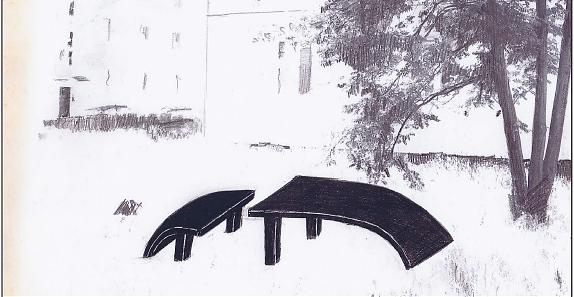
The table is one of basic functional forms. Its functionality lies in creating a “plane” for dialogue. It is, literally and metaphorically, a link between persons representing different, at times very distant, viewpoints. The distance between them includes the metaphor of space, to which Maciej Kurak’s work entitled “Spółka z.o.o.” (Eng. limited-liability company) refers.
A horseshoe-shaped table joined two cities which are 253 km away from each other. Its biggest part is hidden underground while both ends (Poznań, Jeżyce) and a curved centre (Sokołowsko) stick out above the ground. The shape of the work is fundamental to explaining its meaning.
Placing the beginning and the end in one point can be understood as a reference to the interactive nature of discussion taking place at the table – what we utter returns to us. Hiding its fundamental part underground is a reference to “invisible bonds”, “potential relationships”, “an infinite number of possible connections”. Both features (bending and hiding) as well as the title of the work draw on the viewer’s imagination, put out an intellectual challenge and push out of common cognitive patterns. “Spółka z.o.o.” as the name for the table joining two cities carries a positivist message: communication, or in broader terms, cultural exchange, is a special kind of capital investment whose success is not certain, since it depends strictly on the will and commitment of the parties that communicate.
Maciej Kurak’s work is a parabola as regards its form (a geometric figure – half-oval curve) and a parable when it comes to its content (ethical and moral story based on an exaggeration of qualities of an object, which has an allegorical meaning). “Spółka z.o.o.” is, on the one hand, an invitation to an active participation in shaping exchange between cultural centres and drawing on positive models in that respect, while on the other, it cautions against the responsibility that is connected with such activities. The “table” seen as a “company” underlines the significance of the so-called invisible assets of cultural activities, which can be identified as communication skills of people taking part in them. The ability to enter into dialogue turns out to be a valuable talent in this context.